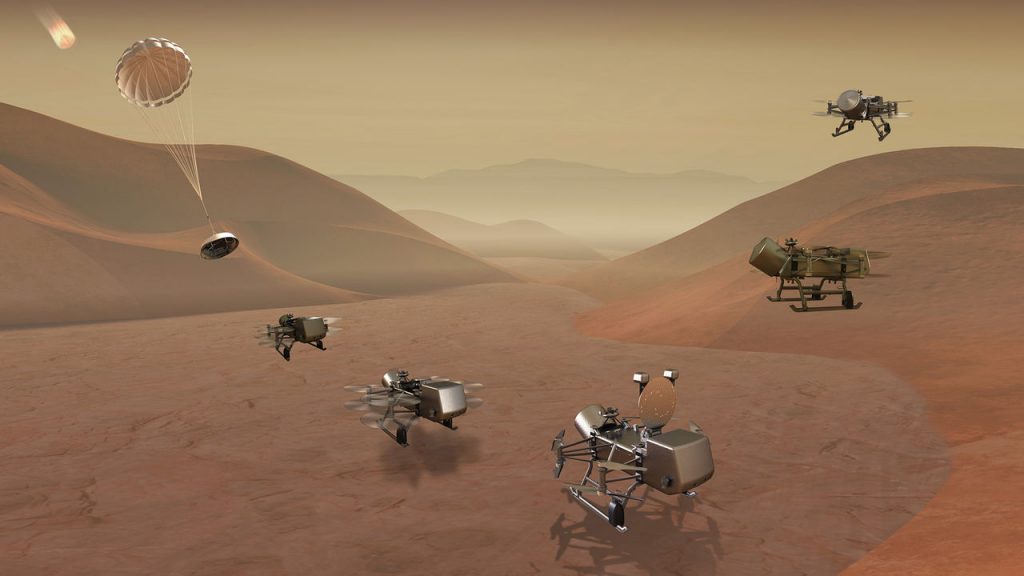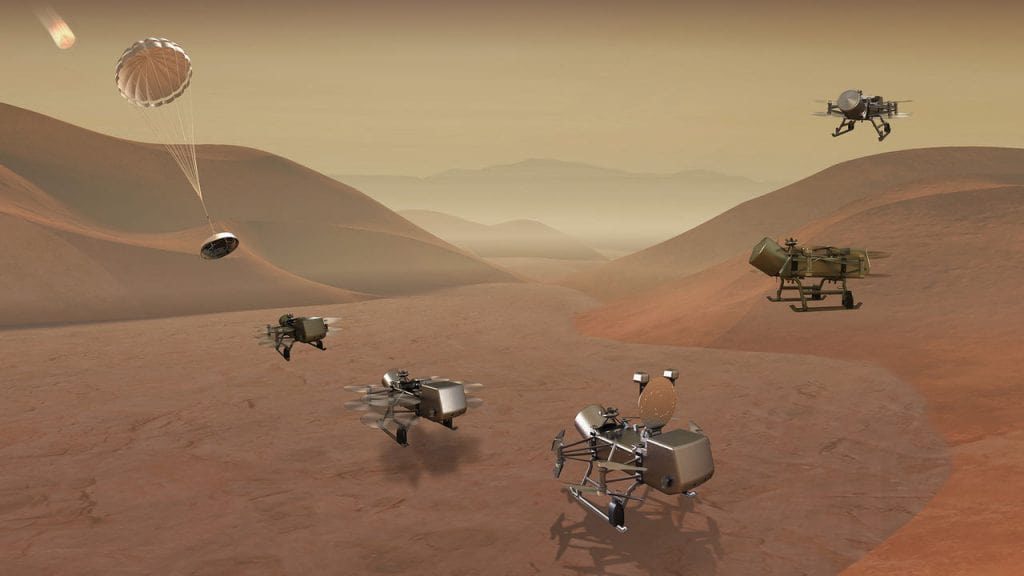Nasa to Fly Dragonfly a Drone-like Lander on Titan to Find the Traces of Life
Our solar system and space beyond have always been the topic of interest for the humans. For a few years now, most of the big space agencies are exploring the Martian surface, and now, the American space organisation, NASA has decided to explore ‘Titan’, one of the 62 moons of Saturn.
Nasa has revealed that it will send a drone-like lander, named Dragonfly, on the surface of Titan, capable of flying 8 or 9 miles in an hour. The Dragonfly will be a 10-foot-long, and 10-foot-wide dual-quadcopter, similar to the size of the Mars rover and will be a look-alike of a giant drone.

Since the Titan has the best environment for flying rather than walking or rolling over the surface, the drone is specifically designed to hop and fly over it. The gravity of Titan is equal to one-seventh of the Earth’s gravity and has a far thicker environment than that of the Earth, providing the suitable conditions for Dragonfly to fly in it.
According to Nasa, the drone will be exploring the surface of Titan and will discover places for landing over it. It will be collecting samples for research, observe the weather conditions and will notify the agency if it finds something unusual. The drone is equipped with drills and probes, to investigate the surface and has got cameras embedded to it, through which will it will be sending HD pictures of the objects found on Titan back to Nasa. Dragonfly will spend about 16 days at a single place and examine the environment. After 16 days, it will move further with the help of the eight rotors it possesses.
Elizabeth Zibi Turtle, the lead investigator of the mission, said during the announcement that Nasa will launch Dragonfly in 2026, which will land on the dune-filled equatorial region of Titan through a parachute. The drone will be back to Earth in 2034.
Nasa has already touched down the surface of Titan with the Huygens probe via the Cassini mission earlier, but according to Turtle, with Dragonfly, it will be a more in-depth mission and will discover major alien things on it.
“We know that Titan has rich organic material, very complex organic material on the surface. There’s energy in the form of sunlight, and we know there’s been water on the surface in the past. These ingredients, that we know, are necessary for the development of life, as we know it is sitting on the surface on Titan. They’ve been doing chemistry experiments, basically, for hundreds of millions of years, and Dragonfly is designed to go pick up the results of those experiments.” said Turtle.
With the rivers and other organic material found on Titan, it has always been considered as a prototype of Earth, before life on Earth. So the interest of the researchers has always been to find the traces of life over it.

Yashica is a Software Engineer turned Content Writer, who loves to write on social causes and expertise in writing technical stuff. She loves to watch movies and explore new places. She believes that you need to live once before you die. So experimenting with her life and career choices, she is trying to live her life to the fullest.

